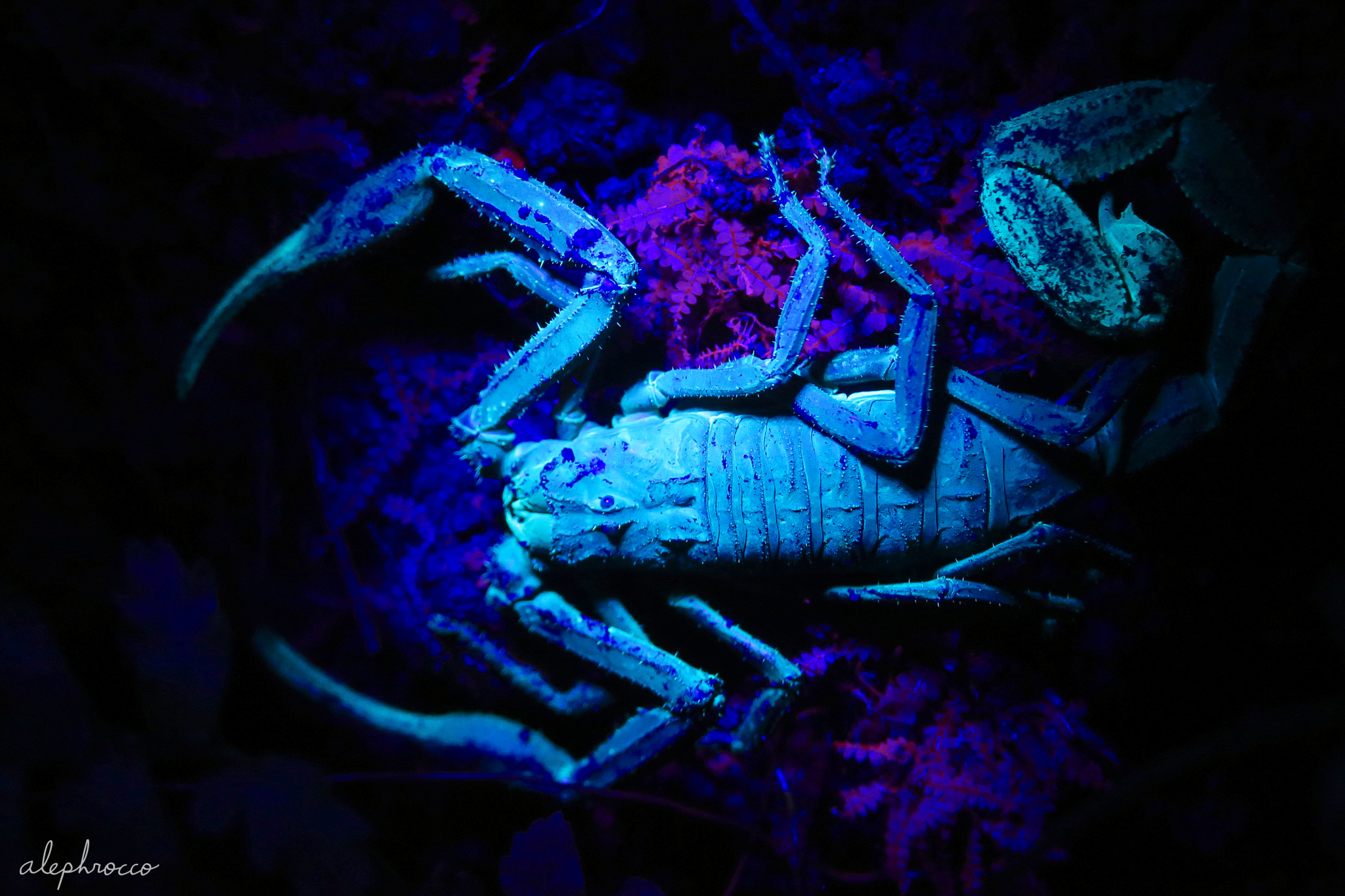
Scorpions are probably the most well-documented animal that exhibits ultraviolet fluorescence. When exposed to UV light, compounds in the epicuticle undergo chemical reactions, producing a characteristic neon blue-green glow. Several fluorescent compounds have been identified in the scorpion cuticle. One of them, beta-carboline, is also released from human cataracts during hydrolysis, and similar compounds have been found in less than a dozen plant families, cyanobacteria, and some tunicates. What’s also interesting is that UV-induced fluorescence seems to be acquired only after scorpions molt into the second instar. It would be cool to know more about the development of the cuticle and how scorpions begin producing these fluorescent compounds.
Ultraviolet fluorescence in arthropods is understudied, and many other taxa have been documented with similar properties. A lot of arachnids take the glory of the glow, from harvestmen to millipedes and spiders, but it has also been observed in phasmids, mantids, katydids, a plethora of eyes and ocelli in other arthropods, frogs, geckos, fish, flowers, chameleon bones, and puffin beaks! Different materials fluoresce at different wavelengths, and for many taxa the fluorescence may only be visible for a short “window” of wavelengths. As this phenomenon becomes increasingly more well-known, it will surely continue to pop up all around the tree of life.
The function of UV fluorescence in scorpions has remained a mystery, though it has been hypothesized to play a role in conspecific recognition, prey attraction, or simply be a byproduct of physiological development of the cuticle. Fluorescence is an active process that occurs via chemical reactions, as opposed to pigment composition or microstructures that produce iridescence. Because of this, the strength of UV fluorescence degrades as a scorpion is exposed to the light for longer periods of time. In a study by Kloock et al. (2010), scorpions were exposed different periods of UV light, and they found that scorpions that lost more fluorescent pigments were more likely to avoid ultraviolet light. Since scorpion vision is attuned to green and UV light, it could be that the scorpions use their own faint fluorescence to regulate nocturnal activity levels. Gaffin et al. (2012) tested this theory by blocking the lateral and median eyes of scorpions and monitoring movement rates under exposure to different wavelengths of UV light. Scorpions exposed to 505 nm exhibited significantly less activity, suggesting that the scorpion cuticle may serve as a photon collector, transducing UV light into blue-green fluorescence to perceive its immediate light environment. This mechanism would be beneficial for scorpions to find refuge from predators during the night, finding spots where their cuticle receives the least amount of ultraviolet light from the night sky.

While shining my blacklight in the rainforest I’ve noticed that many plants and ferns have red fluorescence. This type of fluorescence actually originates from molecules of chlorophyll. Absorbed light energy can drive a combination of photosynthesis, heat dissipation, and light emission. Because of this, chlorophyll fluorescence has become a powerful tool aiding in measures of photosynthetic efficiency. Since chlorophyll is found in most plants, I thought it was surprising that only a minority of plants readily showed this property. At night a plant will shut down its photosynthetic function, but once exposed to light the reaction centers progressively saturate as photosynthesis ramps up. This process of photochemical quenching yields a transition from no fluorescence to a spike in intensity before dissipating excess light energy in the form of heat. I haven’t tried this with plants yet, but supposedly you can induce strong red fluorescence in plants for a very brief moment simply by a presenting them with a stark transition from a dark to light environment (and back to dark so you can actually see the fluorescence with a blacklight!). This phenomenon is called the Kautsky effect, first described by Hans Kautsky in 1931.
